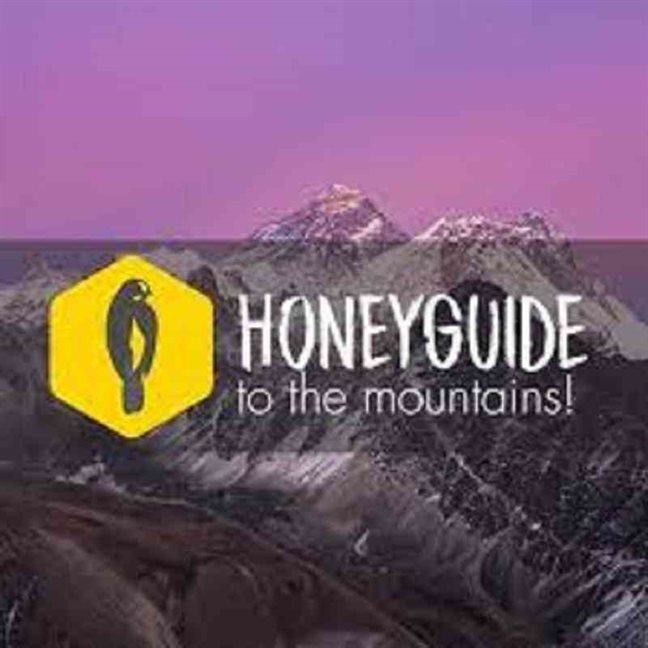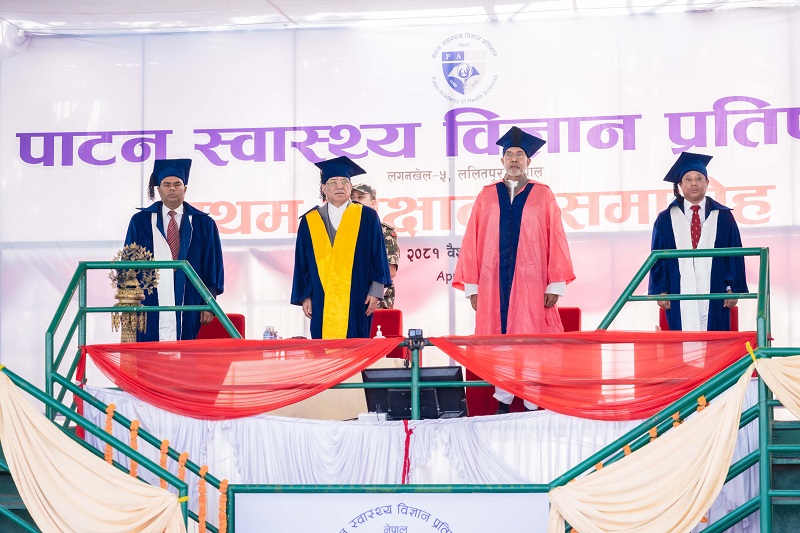11th September 2022, Kathmandu
Two School friends create “Honeyguide”, an app for tourism solely with their passion for traveling
Ashish Shrestha says travel gives him happiness. He has a special interest in the Himalayan region. His friend Abhishek Pandey always supports him on this tour.
Two friends who studied at Kathmandu Gems School got separated during college. Ashish went to America to study neuroscience while Abhishek went to Singapore to study business. After returning to Nepal after college, the two reunited friends set out on a trip to the Himalayas. Toured many mountain areas like Everest Region, Annapurna West Camp, Annapurna Circuit, Manaslu, Makalu, and Barun.
He wanted to get more information while traveling. However, it was difficult to find the information they were looking for. Even after seeing the place, it was difficult to get complete information about it. They even had to get the number of the hotel.
“It was very difficult to get information about the places we visited, the hotels there, the nature,” says Ashish, “I felt that such information should be easily available to the tourists who come to visit.”
Tourists who want to go that way necessarily need detailed written material about that place. By reading it, tourists can get all the information and travel alone.
Seeing such a gap, two friends started making content around that area. He started putting that content on his website.
And, with that way of talking and traveling, work started and ‘Honeyguide’ was born.
They started creating much different content on the mobile app and website about places in the Himalayan region, art culture, and places to visit.
From the beginning of 2015, they started creating content and putting it on the website. After that, the earthquake happened.
In October 2015, the app was released and started keeping various information. It was difficult to get income from content alone. “We thought of making it more commercial and taking it forward,” says Ashish, “we have started the digitization work since 2018.”
They roamed the Everest region. He kept his word to the hotels there. He explained that if it is connected online, customers can come directly. In this way, they gradually connected the hotels, tourist guides, and porters of the Everest region to their digital platform. Airlines are also connected.
Today, Honeyguide has set out to digitize tourism in the Himalayan region. It is currently working in the Everest region. He said that 800 to 1000 of the tourists going to Everest are using their platform.
“This is an online travel agency,” says Ashish, “which is working with a focus on mountain travel in Nepal.” About 300 hotels in the Everest region are available on their platform. Similarly, around 50 guides in Lukla and around 120 trekking guides in Kathmandu have been added.
Their profile is maintained. Tourists can choose the guide they want. “We are going by the name of Honeyguide to the Mountain,” he says, adding that in the first phase, he has proceeded with a plan to take at least 10 percent of the tourists going to Everest.
They are digitizing tourism in that area. Everest region has connected everything online. They have informed us about nature, art, culture, lifestyle, and natural beauty that can be seen online.
“We have provided detailed information online about which flowers can be seen in that area,” says Ashish. This work will help to increase the number of tourists in that area and the tourism there will be digitized.
Hotels, restaurants, guides, porters, or businessmen in the tourist sector who provide this service can get many benefits. With this facility, tourists from abroad can directly connect to the mobile app or website and reach the area. The hassle that tourists have to do at different levels will also be removed. Another service provided by them is ‘flight booking’. Similarly, travel packages have also been provided.
“We have also provided packages to interested tourists,” he says. Even after booking the flight. If you don’t do that, only the information there can be taken.
Annually, 800 to 1000 tourists are going to the Everest region through them. Although this is not a big number, he says it is a good start.
This is a model. It has been said that it can work,” he says.
What is the use of information and communication technology (ICT) in Nepal’s tourism sector? If we look at the world ranking, Nepal is behind 130 countries in the world in “ICT use in travel”.
Information technology (ICT) has not been used in the tourism sector of Nepal. What this means is that information technology has not been used in the tourism sector of Nepal. There is a huge gap in it.
Why tourists have not come to Nepal despite being a country full of natural beauty? There are many reasons for this, but one of the biggest problems is the inability to use information technology and technology.
After deciding to come to Nepal, a tourist from a country wants to get detailed information about places to visit and stay here. How to get here? They want to take many things in detail like hotel booking, travel package, payment and things not to be missed during their stay here.
Information and communication technology plays a big role in all these processes. Honeyguide is a company opened to fill this big gap in Nepal. The Himalayan region has its problems. Made products to solve the problems of hotels and locals there.
Ashish is satisfied with the company he started with an investment of one crore rupees.
“We are still practicing,” says Ashish, “there is still a lot of work to be done.” They are working by focusing on the Himalayan region. Although there is great potential in the tourism sector of high mountains in Nepal, it has not been promoted accordingly. The main reason for this is the inability to connect tourism there with technology.
“We are working to solve this issue by focusing on the Himalayan region,” says Ashish, “We have started it from the Everest region.”
Working not only in the Everest region, but he is also thinking of digitizing the tourism of other Himalayan regions as well. However, he says, it will take some more time. There are various problems in digitizing the Himalayan region. The first thing is that there is no internet everywhere. Without digital infrastructure, their work will be hindered.
He said that he would plan for other places by learning from the experience of the Everest region. Ashish and Abhishek, who took their passion forward as a project, are now moving ahead professionally.
Although he went to America to study neuroscience, Ashish’s heart was in the Himalayas of Nepal. His inner mind, wandering in the Himalayas, led him here.
Why was it named Honeyguide?
They are working to establish a relationship between tourists and service providers. That is why he says that there is a relationship like ‘Honeyguide’.
A honeyguide is a bird that shows the bee’s wheel in the bee hive to the bee harvester. He shows the way to the honey collector. The person collects honey and eats it. The bird eats the honey that is in a hurry.
“We are like honeyguide birds,” says Ashish, “We take tourists to hotels or tourist areas.” They do business. We get some commission.
After deciding to come to Nepal, a tourist from a country wants to get detailed information about places to visit and stay here. How to get here? They want to take many things in detail like hotel booking, travel package, payment and things not to be missed during their stay here.
Information and communication technology plays a big role in all these processes. Honeyguide is a company opened to fill this big gap in Nepal.











